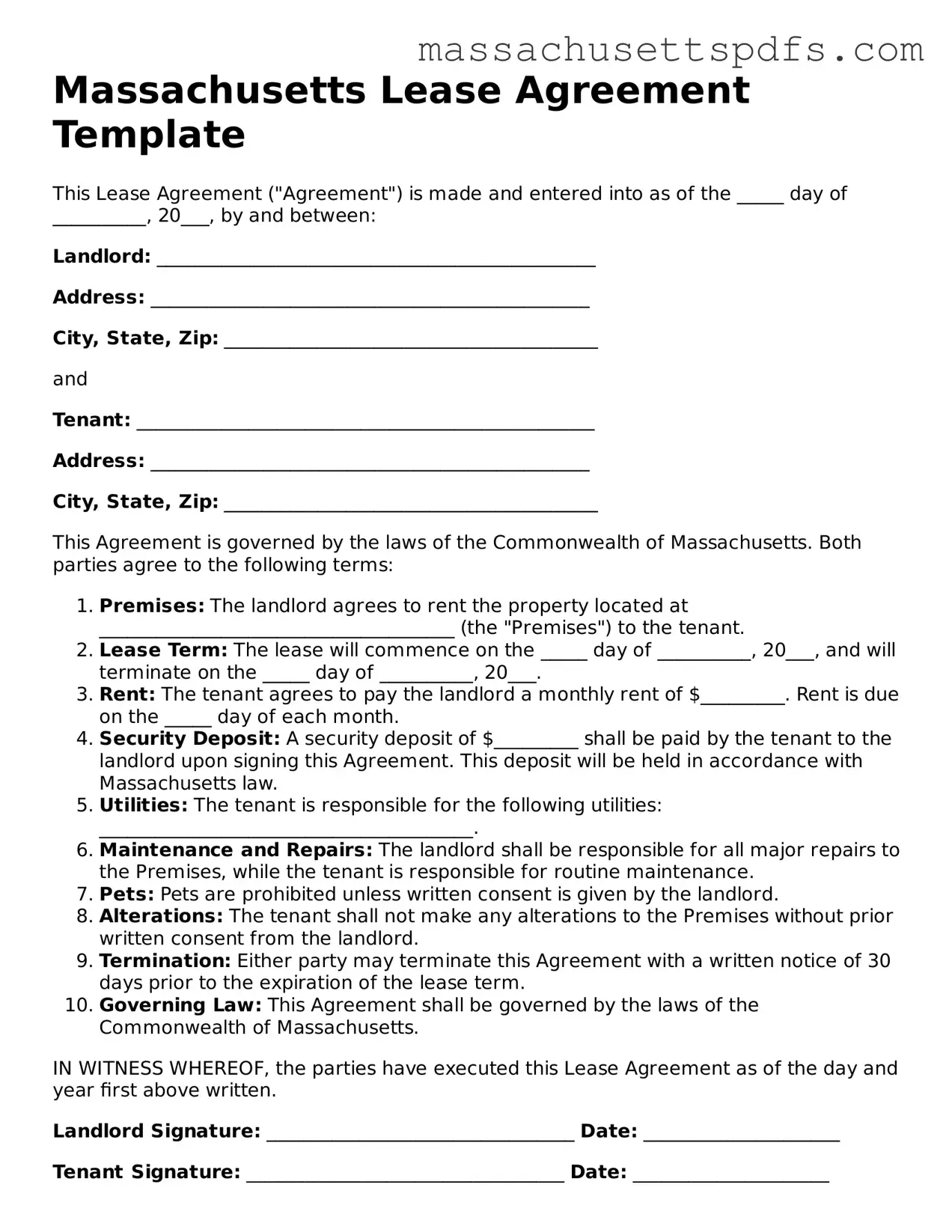Attorney-Approved Massachusetts Lease Agreement Document
A Massachusetts Lease Agreement form is a legal document that outlines the terms and conditions between a landlord and a tenant for renting a residential property. This form serves to protect the rights of both parties, ensuring clarity and understanding throughout the rental period. To get started, fill out the form by clicking the button below.
Launch Editor Here
